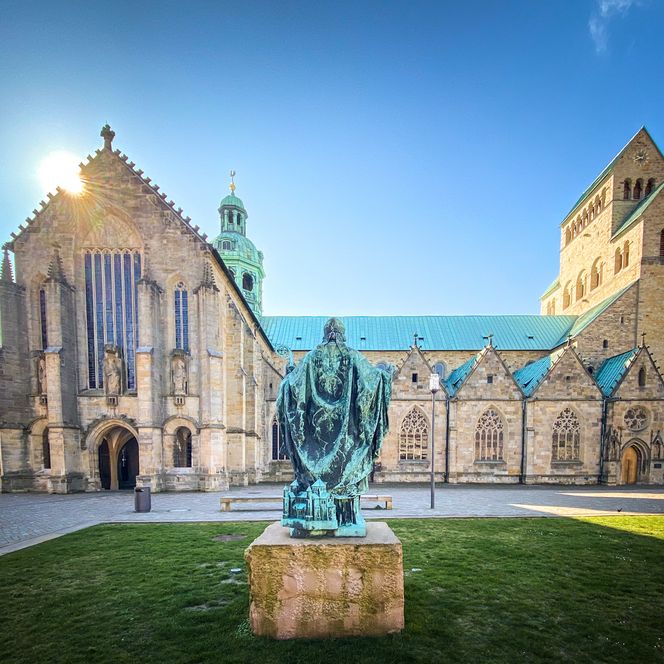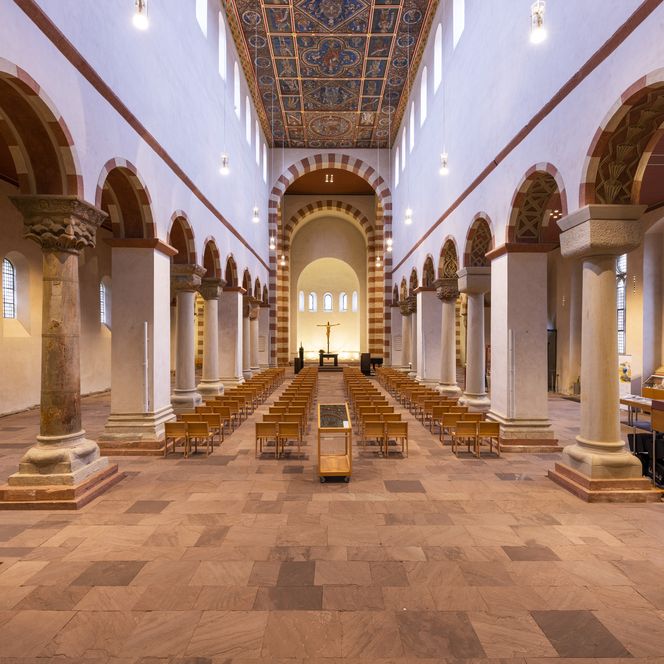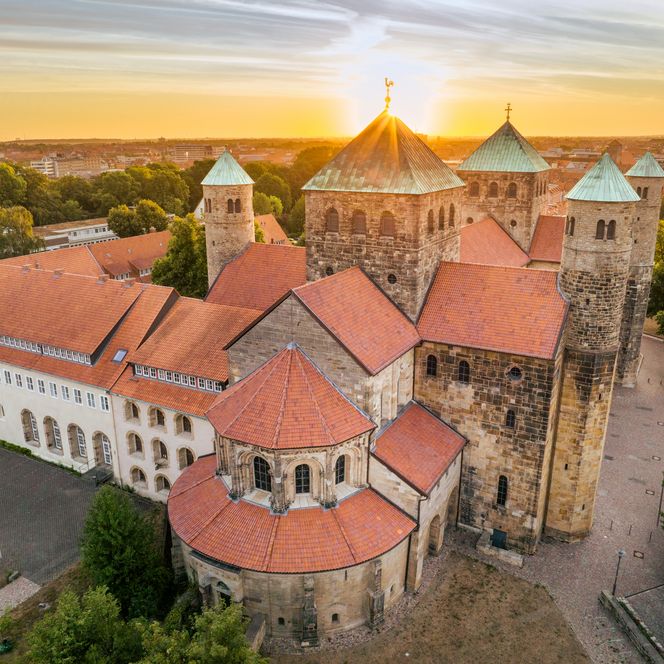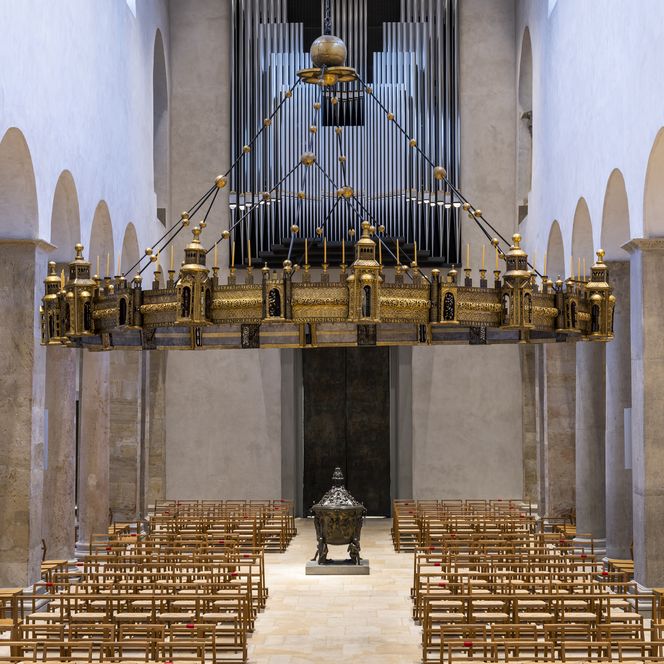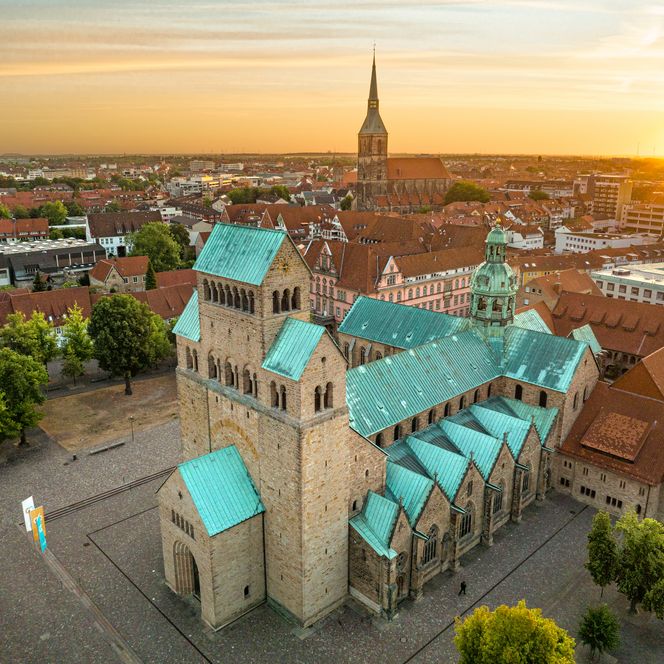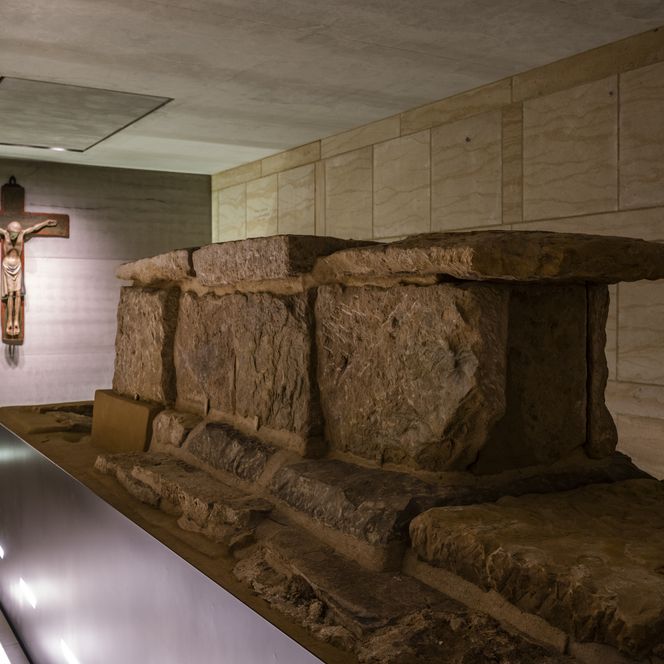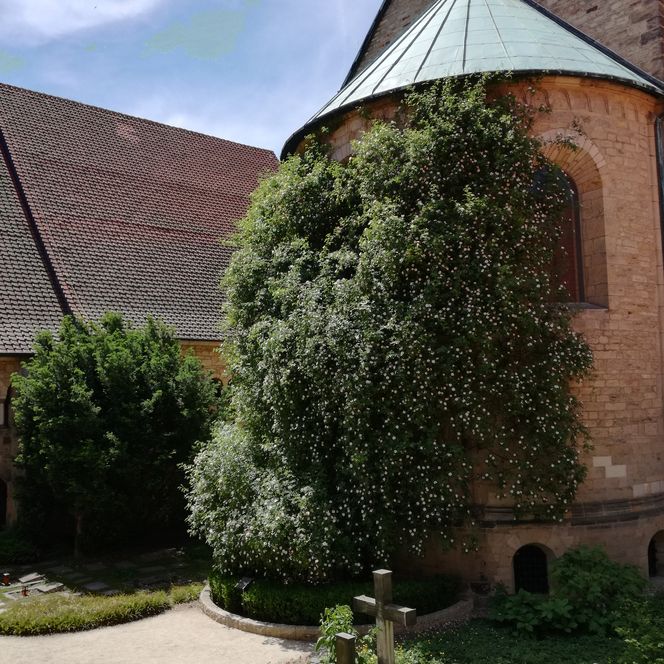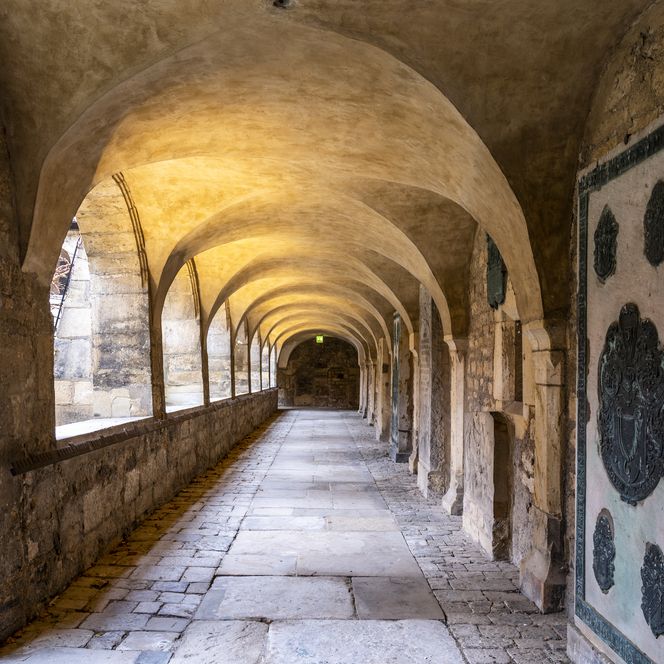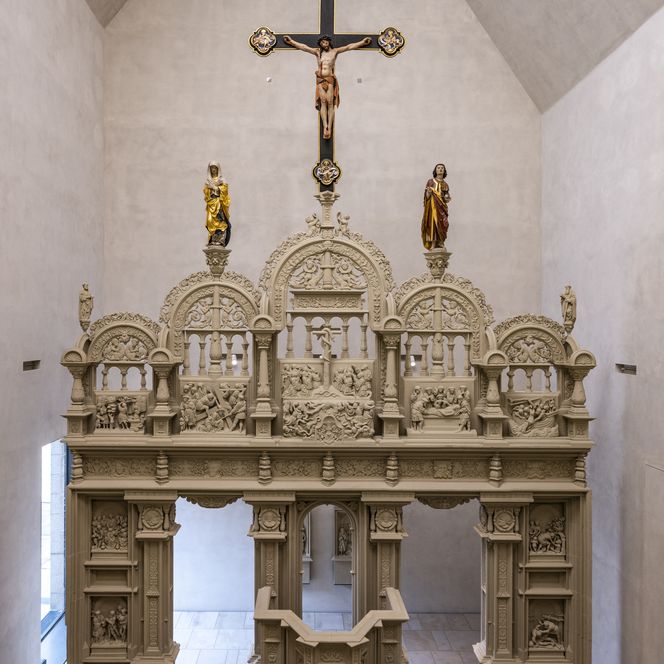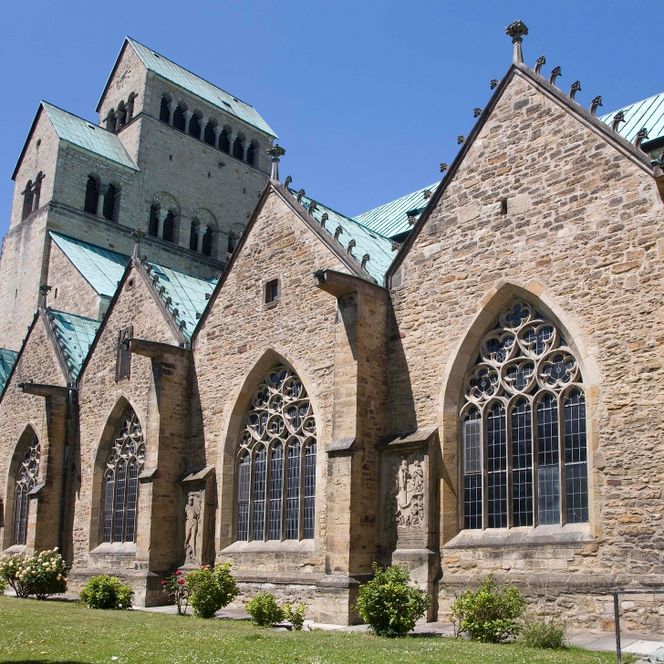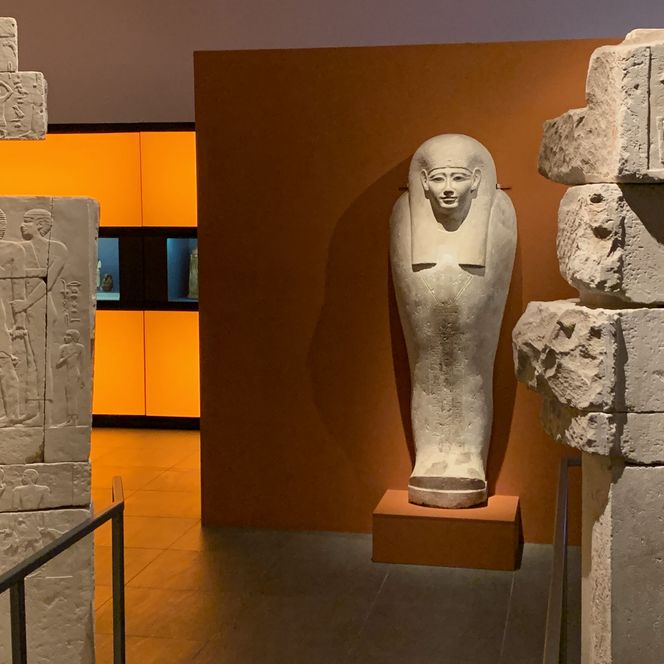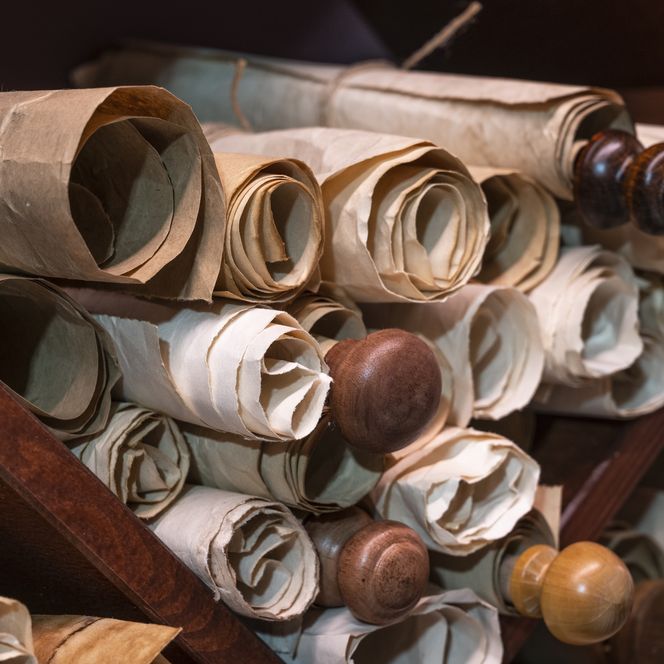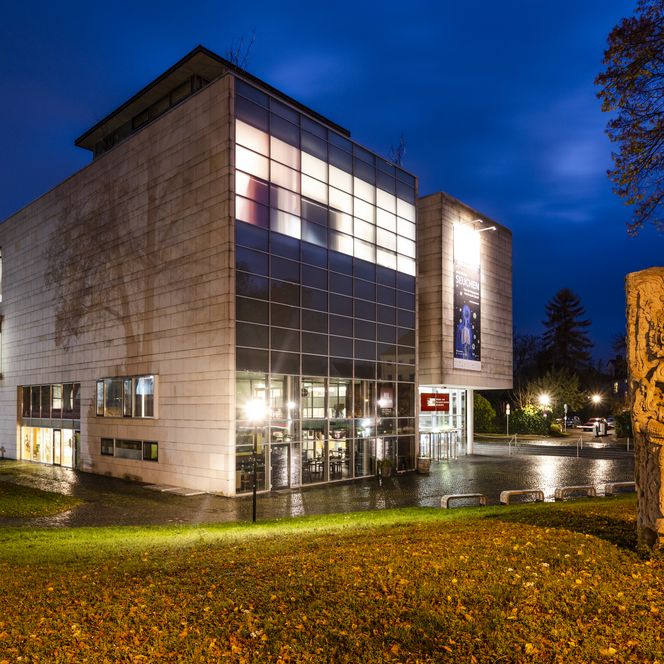Discover two masterpieces of UNESCO World Heritage in Hildesheim: St Mary’s Cathedral and St Michael’s Church. Their impressive architecture and artistic treasures reflect over a thousand years of history.
UNESCO World Heritage in Hildesheim
St Mary’s Cathedral and St Michael’s Church
Together, St Mary’s Cathedral and St Michael’s Church form one of the most significant ensembles of Romanesque architecture in Germany. Traces of over a millennium of history can be found here: St Mary’s Cathedral, with its rich interior, cloister, imposing west façade and precious chandeliers and shrines, shares UNESCO World Heritage status with St Michael’s Church. The best view of both churches can be enjoyed from the tower of St Andrew’s Church, which is the tallest church tower in Niedersachsen at 114 metres.
One truly unique and world-famous sight is the thousand-year-old rosebush, believed to be the oldest in the world. And it’s not only an attraction when it’s in bloom: anyone who has ever stood in the sacred churchyard behind the cathedral will never forget the sense of peace it inspires.
Façades to marvel at
Half-timbered wonder
With its elaborately adorned façades and narrow alleyways, Hildesheim transports visitors back in time. In the picturesque market square, hundreds of colourful carvings embellish the beams of the historic Butchers’ Guild Hall. Hildesheim has preserved a truly unique cultural heritage.
World-class museums
Museum treasures
If you’re looking to immerse yourself in culture, Hildesheim can easily hold its own against Germany’s larger cities. Some visitors come specifically for the Roemer and Pelizaeus Museum. Its Ancient Egyptian collection – featuring life-sized statues, coffins, mummies and burial objects – is considered one of the most important of its kind anywhere in the world.
